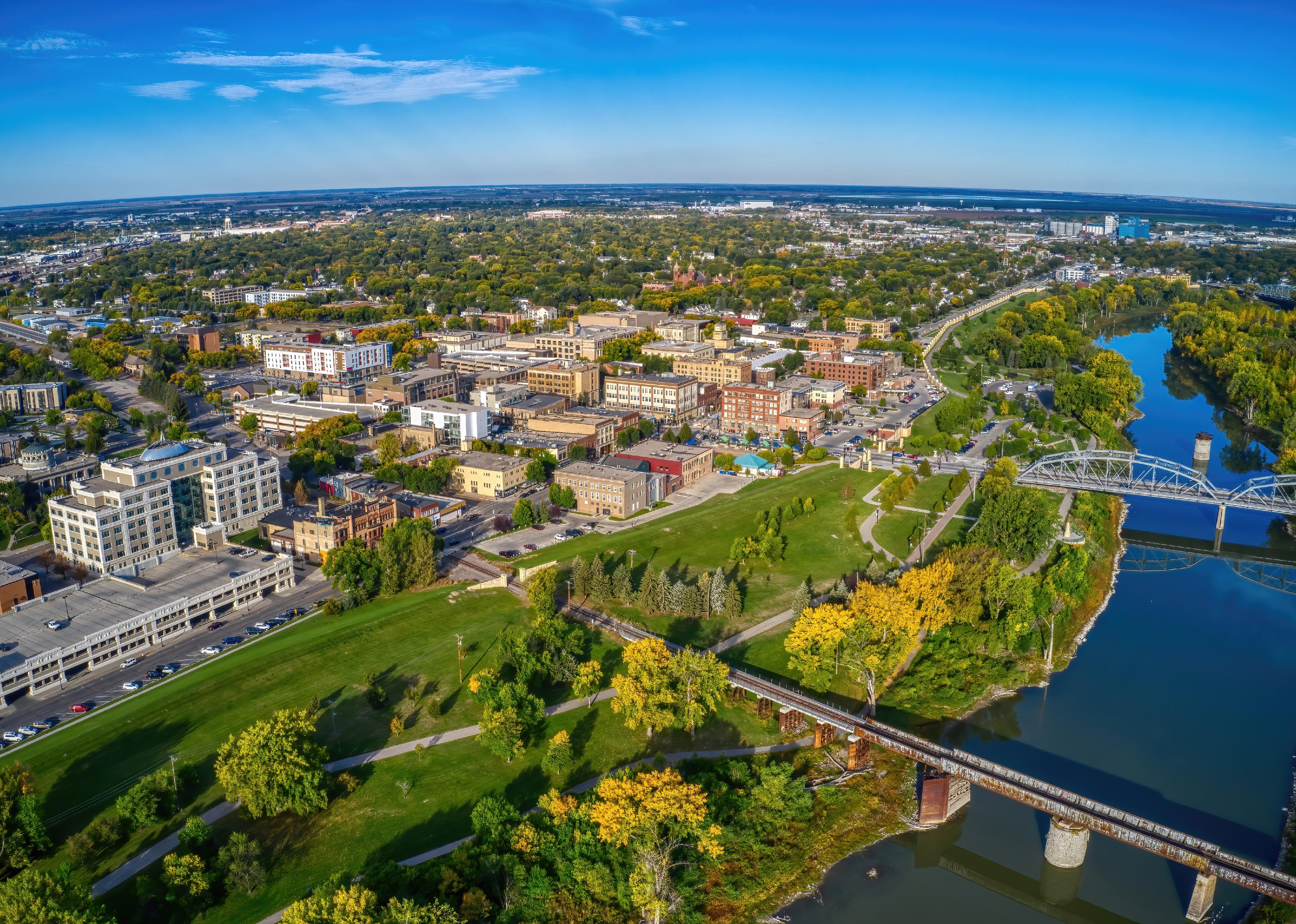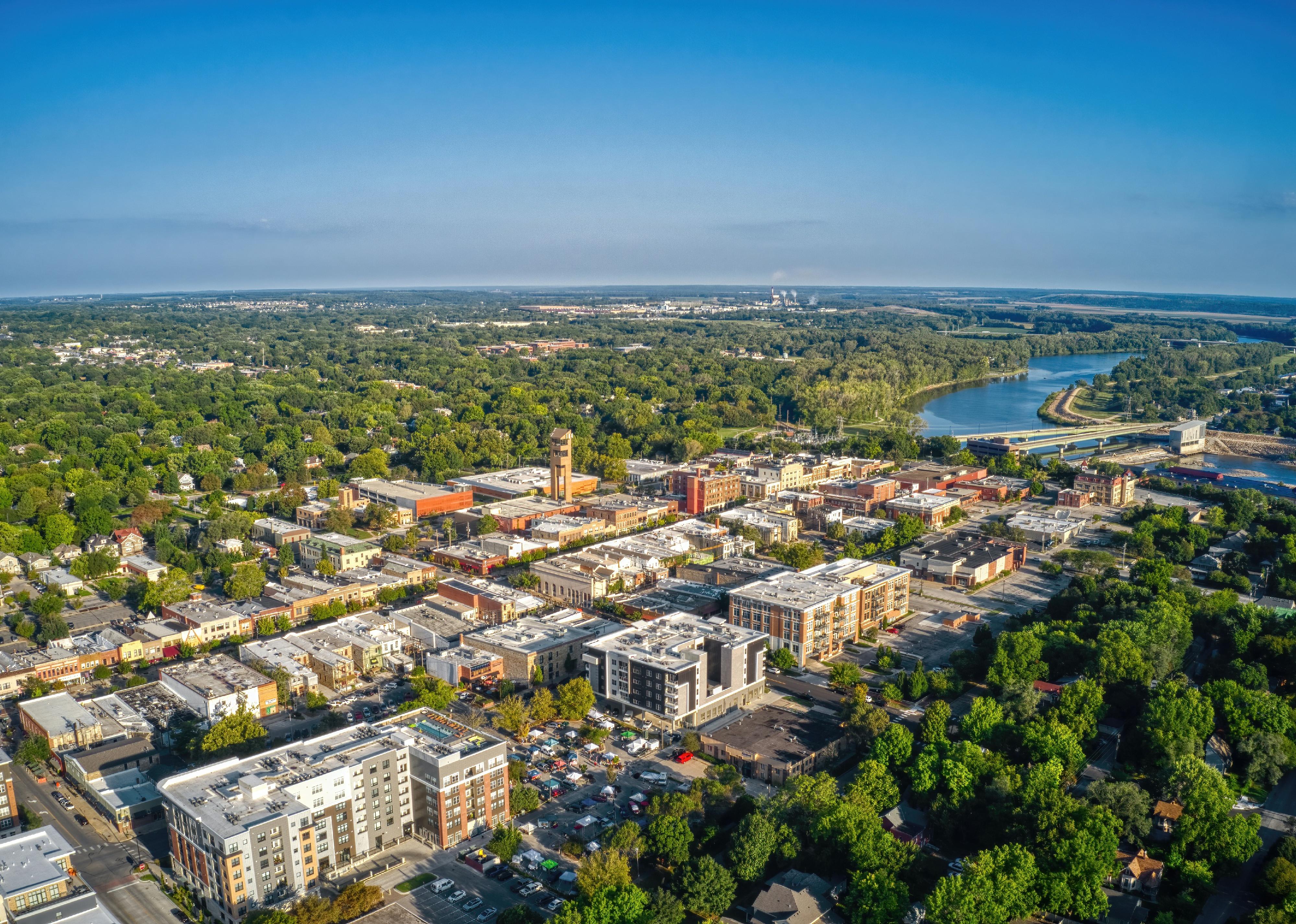How many children live in poverty in your state?

Canva
How many children live in poverty in your state?
For the first time since 2010, the national poverty rate has increased. According to the Census Bureau’s American Community Survey Data Briefs, the percentage of people living in poverty increased by 0.5% over the course of two years: from 12.3% in 2019 to 12.8% in 2021. In plain numbers, just over 1.6 million more people live in poverty.
Previously, the American poverty rate was in a decadelong downward trend. Now, it is approaching 2016 levels of nearly 41 million Americans—approximately 11 million, or 1 in 7, are children. The consequences of growing up in a household with an income below the poverty line cover nearly every dimension. Children who grow up in poverty face more physical and mental health problems, lower educational and job success, and are more prone to engage in risk-taking behaviors, according to the Center for American Progress.
Mollie Orshansky, an economist at the Social Security Administration, created the official poverty measure in the 1960s. This measure, still in use today, aims to account for the cost of food and other necessities, as well as the cost of living, accessibility of education, geography, and other contributing factors. With so many variables, it can be difficult to calculate a national standard of poverty that applies equitably to all ways of living. Similarly, wealth distribution and social welfare are not equally accessible to people in the United States.
Stacker analyzed data from the Census Bureau’s Small Area Income and Poverty Estimates program’s state and county estimates for 2021, released in December 2022, to find the number of children living in poverty in each state and Washington D.C. The data is further split into two respective age groups—ages 0-4 and 5-17. The values reported below reflect estimates determined by the Census Bureau’s SAIPE program—not exact counts of the number of children who live in poverty in each state—so the sum of children in both age groups may not precisely match the total value reported for a given state.
![]()

Albert Pego // Shutterstock
#51. Vermont
– Children ages 0 to 17 in poverty: 12,908 (11.2% of this age range in state)
– Children ages 0 to 4 in poverty: 3,196 (11.6% of this age range in state)
– Children ages 5 to 17 in poverty: 9,163 (10.5% of this age range in state)
– Median household income: $72,415
– County with the most children in poverty: Chittenden County (2,305 children, 7.9% of children in this county)
Vermont has one of the lowest poverty rates in the United States, but the estimated number of kids in poverty under 18 still exceeds 10,000. The state intends to actively address the consequences of childhood poverty by working to make child care more accessible.
LBill45 // Shutterstock
#50. Wyoming
– Children ages 0 to 17 in poverty: 15,661 (12.1% of this age range in state)
– Children ages 0 to 4 in poverty: 4,455 (14.2% of this age range in state)
– Children ages 5 to 17 in poverty: 10,517 (10.7% of this age range in state)
– Median household income: $66,508
– County with the most children in poverty: Laramie County (2,638 children, 11.7% of children in this county)
Climb Wyoming is an organization focused on elevating mothers by offering professional and financial resources. As of 2022, the organization has served over 1,250 mothers and 2,500 children across all of Wyoming’s 23 counties.
Jacob Boomsma // Shutterstock
#49. North Dakota
– Children ages 0 to 17 in poverty: 21,011 (11.5% of this age range in state)
– Children ages 0 to 4 in poverty: 6,455 (12.9% of this age range in state)
– Children ages 5 to 17 in poverty: 13,843 (10.5% of this age range in state)
– Median household income: $67,603
– County with the most children in poverty: Cass County (3,844 children, 9.3% of children in this county)
North Dakota has a lower-than-average child poverty rate compared to the rest of the U.S.; however, post-COVID-19 data compiled by the Annie E. Casey Foundation indicates the state ranks among the highest in racial disparities in terms of childhood poverty.

Jon Bilous // Shutterstock
#48. New Hampshire
– Children ages 0 to 17 in poverty: 23,403 (9.3% of this age range in state)
– Children ages 0 to 4 in poverty: 5,622 (9.4% of this age range in state)
– Children ages 5 to 17 in poverty: 16,720 (8.8% of this age range in state)
– Median household income: $88,268
– County with the most children in poverty: Hillsborough County (8,206 children, 9.9% of children in this county)
The Kids Count Data Center reported that New Hampshire actually saw an increase in the number of children with parents lacking secure employment from 2018 to 2021, in contrast with other states during the same time period. In 2018, 22% of New Hampshire parents lacked secure employment—a statistic which rose to 23% in both 2019 and 2021, the next two years the study was conducted. That’s an additional 2,000 children.
Canva
#47. Alaska
– Children ages 0 to 17 in poverty: 23,760 (13.5% of this age range in state)
– Children ages 0 to 4 in poverty: 6,633 (14.1% of this age range in state)
– Children ages 5 to 17 in poverty: 16,316 (12.7% of this age range in state)
– Median household income: $78,437
– County with the most children in poverty: Anchorage Borough (7,645 children, 11.3% of children in this county)
Anchorage is Alaska’s largest city and part of the Anchorage Borough. Community health centers, subsidized child care, and minimum wage requirements are a few endeavors the Alaska Department of Health and Social Services credits with helping reduce poverty statewide.
JohnDSmith // Shutterstock
#46. South Dakota
– Children ages 0 to 17 in poverty: 30,921 (14.4% of this age range in state)
– Children ages 0 to 4 in poverty: 9,423 (16.5% of this age range in state)
– Children ages 5 to 17 in poverty: 20,663 (13.1% of this age range in state)
– Median household income: $66,843
– County with the most children in poverty: Minnehaha County (4,978 children, 10.0% of children in this county)
Minnehaha County doesn’t provide assistance to minors living apart from their parents. But according to the county’s government website, it links the lack of affordable housing to homelessness. It also reported roughly 106,646 people in South Dakota are at risk of going hungry, and 68% are forced to choose between buying food or paying utility bills.
f11photo // Shutterstock
#45. District of Columbia
– Children ages 0 to 17 in poverty: 31,194 (25.5% of this age range in state)
– Children ages 0 to 4 in poverty: 9,444 (24.3% of this age range in state)
– Children ages 5 to 17 in poverty: 21,233 (25.5% of this age range in state)
– Median household income: $91,072
– County with the most children in poverty: District of Columbia (31,194 children, 25.5% of children in this county)
While the child poverty rate has decreased over the past decade in the District of Columbia, the cost of living has continued to rise. Meanwhile, at least 2 in 5 children in the district come from families whose parents don’t have steady employment.
Real Window Creative // Shutterstock
#44. Delaware
– Children ages 0 to 17 in poverty: 33,302 (16.2% of this age range in state)
– Children ages 0 to 4 in poverty: 9,694 (18.6% of this age range in state)
– Children ages 5 to 17 in poverty: 23,013 (15.0% of this age range in state)
– Median household income: $71,636
– County with the most children in poverty: New Castle County (17,746 children, 14.8% of children in this county)
Similar to Maine and a handful of other states, Delaware’s most populated county is also the county with the most children living in poverty. There are roughly 59,000 children receiving food stamps and 118,134 kids enrolled in Medicaid and the Children’s Health Insurance Program in the state.

Joseph Sohm // Shutterstock
#43. Maine
– Children ages 0 to 17 in poverty: 33,923 (13.8% of this age range in state)
– Children ages 0 to 4 in poverty: 8,895 (14.7% of this age range in state)
– Children ages 5 to 17 in poverty: 23,766 (12.9% of this age range in state)
– Median household income: $64,823
– County with the most children in poverty: Cumberland County (4,712 children, 8.7% of children in this county)
Child poverty in Maine has been trending downward since 2014, reaching just 14.2% in 2021. Cumberland County is the most populous in Maine and also has the highest number of children living in poverty.

Nick Fox // Shutterstock
#42. Montana
– Children ages 0 to 17 in poverty: 34,221 (14.9% of this age range in state)
– Children ages 0 to 4 in poverty: 9,726 (17.2% of this age range in state)
– Children ages 5 to 17 in poverty: 23,405 (13.6% of this age range in state)
– Median household income: $63,357
– County with the most children in poverty: Yellowstone County (4,921 children, 13.0% of children in this county)
Child poverty rates and the number of uninsured children have both decreased in the state of Montana. The Montana Food Bank credits low-income assistance programs for the decrease in poverty rates. Such assistance programs include the Montana School Breakfast and Lunch Program, Montana Special Milk Program, and Montana’s Special Supplemental Nutrition Program for Women, Infants, and Children.
George Wirt // Shutterstock
#41. Rhode Island
– Children ages 0 to 17 in poverty: 34,400 (17.0% of this age range in state)
– Children ages 0 to 4 in poverty: 9,556 (18.6% of this age range in state)
– Children ages 5 to 17 in poverty: 24,199 (16.0% of this age range in state)
– Median household income: $73,324
– County with the most children in poverty: Providence County (27,241 children, 21.0% of children in this county)
Though Rhode Island has a lower childhood poverty rate than most of the U.S., residents are significantly impacted by racial disparities in economic conditions. According to the state’s 2023 Kids Count Factbook, three times as many Hispanic children and more than two times as many Black children live in poverty compared to white children.

Phillip B. Espinasse // Shutterstock
#40. Hawaii
– Children ages 0 to 17 in poverty: 38,291 (12.9% of this age range in state)
– Children ages 0 to 4 in poverty: 10,150 (12.9% of this age range in state)
– Children ages 5 to 17 in poverty: 26,809 (12.4% of this age range in state)
– Median household income: $85,547
– County with the most children in poverty: Honolulu County (23,042 children, 11.2% of children in this county)
In Hawaii, children whose parents do not have secure employment rose sharply between 2019 and 2021. While Honolulu County does have the greatest number of children living below the poverty line in the state, the American Community five-year survey found that for the 2017-2021 period, that number has decreased since the 2016 reporting period.
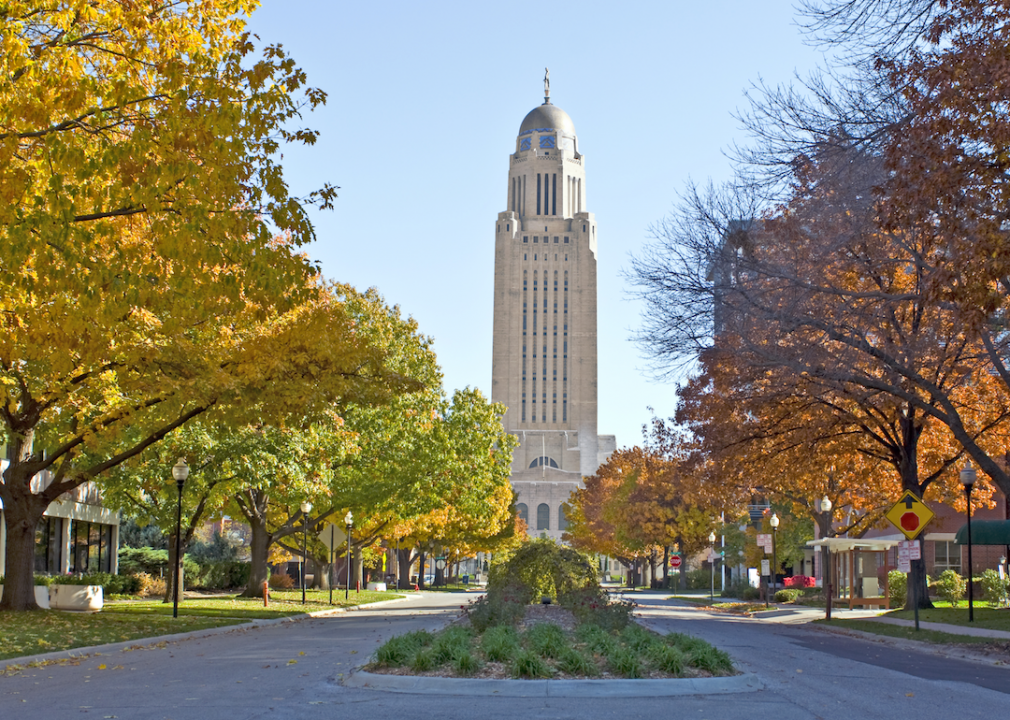
Katherine Welles // Shutterstock
#39. Nebraska
– Children ages 0 to 17 in poverty: 57,279 (12.1% of this age range in state)
– Children ages 0 to 4 in poverty: 16,432 (13.4% of this age range in state)
– Children ages 5 to 17 in poverty: 38,634 (11.1% of this age range in state)
– Median household income: $66,949
– County with the most children in poverty: Douglas County (19,803 children, 13.6% of children in this county)
Douglas County is Nebraska’s most populated county. According to the United Health Foundation, Nebraska has a high percentage of high school graduates, which is a factor in the state having one of the lowest child poverty rates in the U.S.

Charles Knowles // Shutterstock
#38. Idaho
– Children ages 0 to 17 in poverty: 57,576 (12.5% of this age range in state)
– Children ages 0 to 4 in poverty: 17,074 (15.4% of this age range in state)
– Children ages 5 to 17 in poverty: 38,421 (11.1% of this age range in state)
– Median household income: $66,318
– County with the most children in poverty: Ada County (10,262 children, 9.1% of children in this county)
Spotlight on Poverty reports 1,752 children are currently in foster care in Idaho, and 10% of the population is food insecure. Both are factors interrelated with child poverty. Approximately 74,000 children receive food stamps in the state.

David T. Stephenson // Shutterstock
#37. West Virginia
– Children ages 0 to 17 in poverty: 74,847 (21.4% of this age range in state)
– Children ages 0 to 4 in poverty: 21,090 (24.7% of this age range in state)
– Children ages 5 to 17 in poverty: 52,556 (20.0% of this age range in state)
– Median household income: $51,122
– County with the most children in poverty: Kanawha County (7,117 children, 20.6% of children in this county)
According to a 2023 Census Report, 11 of West Virginia’s 55 counties are identified as experiencing “persistent poverty.” To be considered persistent poverty, at least 20% of the county’s population must be in poverty over an extended period of time.
Sean Pavone // Shutterstock
#36. Utah
– Children ages 0 to 17 in poverty: 79,258 (8.5% of this age range in state)
– Children ages 0 to 4 in poverty: 22,873 (9.8% of this age range in state)
– Children ages 5 to 17 in poverty: 52,922 (7.6% of this age range in state)
– Median household income: $79,449
– County with the most children in poverty: Salt Lake County (26,821 children, 8.9% of children in this county)
According to Spotlight on Poverty, 95,000 children in Utah receive food stamps. More than 1 in 5 single-parent households are living below the poverty line.
Jacob Boomsma // Shutterstock
#35. Iowa
– Children ages 0 to 17 in poverty: 89,506 (12.4% of this age range in state)
– Children ages 0 to 4 in poverty: 24,541 (13.3% of this age range in state)
– Children ages 5 to 17 in poverty: 61,916 (11.6% of this age range in state)
– Median household income: $65,645
– County with the most children in poverty: Polk County (13,907 children, 11.6% of children in this county)
Child poverty in Iowa dropped to its lowest rate ever in 2023. Using data from Brookings, the Hamilton Project pointed to the 2021 child tax credit as one resource spurring such changes on the national level.
Jacob Boomsma // Shutterstock
#34. Kansas
– Children ages 0 to 17 in poverty: 93,202 (13.5% of this age range in state)
– Children ages 0 to 4 in poverty: 27,811 (16.0% of this age range in state)
– Children ages 5 to 17 in poverty: 62,373 (12.2% of this age range in state)
– Median household income: $64,128
– County with the most children in poverty: Sedgwick County (21,615 children, 16.6% of children in this county)
Sedgwick County is the second most populated county in Kansas and fares the worst for child poverty. According to television station KAKE, an ABC affiliate in Kansas, the county is also facing a shortage of foster care parents.
Sean Pavone // Shutterstock
#33. Connecticut
– Children ages 0 to 17 in poverty: 93,263 (12.9% of this age range in state)
– Children ages 0 to 4 in poverty: 24,150 (13.9% of this age range in state)
– Children ages 5 to 17 in poverty: 66,642 (12.2% of this age range in state)
– Median household income: $83,628
– County with the most children in poverty: New Haven County (26,492 children, 15.5% of children in this county)
The Hartford Courant reported that Connecticut’s child poverty rates have increased over the last three decades; unfortunately, like many other states across the nation, Black and Latino children are the most affected.
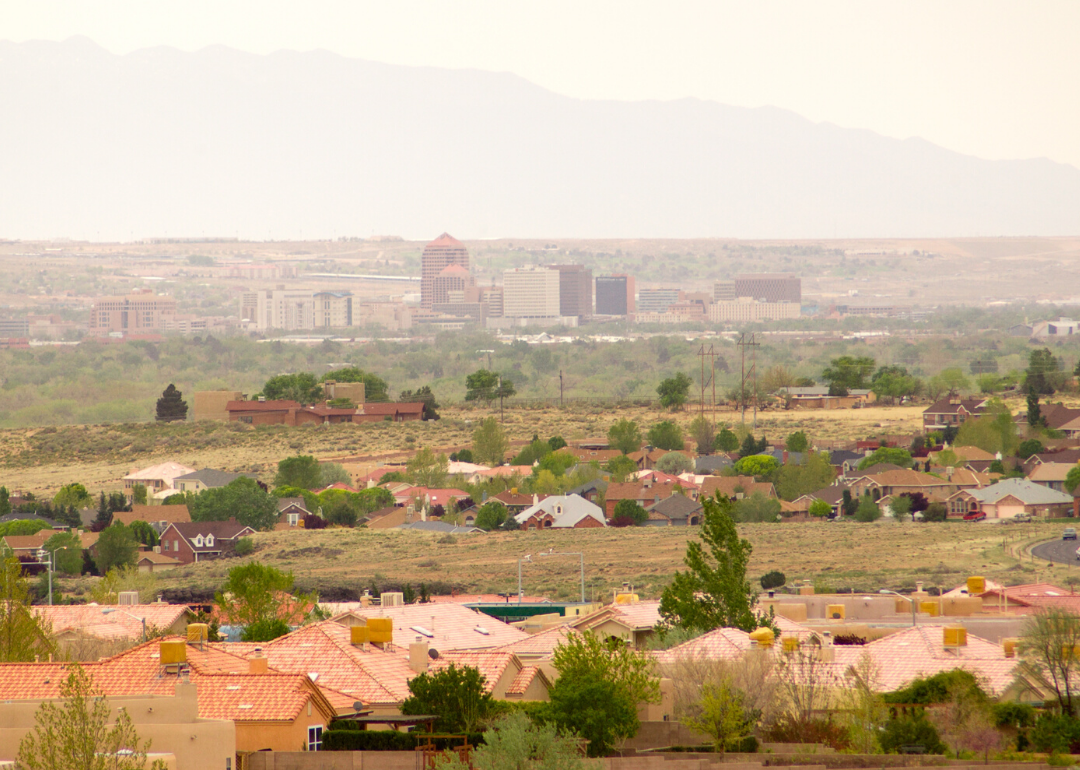
Zack Frank // Shutterstock
#32. New Mexico
– Children ages 0 to 17 in poverty: 107,621 (23.1% of this age range in state)
– Children ages 0 to 4 in poverty: 28,231 (25.1% of this age range in state)
– Children ages 5 to 17 in poverty: 78,030 (22.1% of this age range in state)
– Median household income: $54,304
– County with the most children in poverty: Bernalillo County (25,355 children, 18.2% of children in this county)
Nearly half of single-parent households in New Mexico live below the national poverty line. Participation in federal assistance programs such as the Supplemental Nutrition Assistance Program and Children’s Health Insurance Program is high in the state, where the birth rate per 1,000 people for teens ages 15-19 is nearly 25%.

f11photo // Shutterstock
#31. Oregon
– Children ages 0 to 17 in poverty: 115,775 (13.8% of this age range in state)
– Children ages 0 to 4 in poverty: 29,637 (14.6% of this age range in state)
– Children ages 5 to 17 in poverty: 81,501 (12.9% of this age range in state)
– Median household income: $71,441
– County with the most children in poverty: Multnomah County (17,896 children, 12.7% of children in this county)
According to the Salem Reporter, the number of children living in poverty in Oregon has been steadily declining; what’s more, graduation rates have improved, though they remain among the lowest in the nation. Teen pregnancy, which can be correlated with a lack of health care access and education, has also seen decreased rates—around half of what they were in 2008.
randy andy // Shutterstock
#30. Nevada
– Children ages 0 to 17 in poverty: 128,585 (18.8% of this age range in state)
– Children ages 0 to 4 in poverty: 36,365 (21.0% of this age range in state)
– Children ages 5 to 17 in poverty: 89,119 (17.5% of this age range in state)
– Median household income: $66,194
– County with the most children in poverty: Clark County (105,331 children, 20.6% of children in this county)
While Nevada’s child poverty rate has steadily decreased year over year, one-quarter of single-parent households are in poverty. Additionally, just over 1 in 5 jobs in Nevada are considered low-wage.
Canva
#29. Minnesota
– Children ages 0 to 17 in poverty: 138,759 (10.8% of this age range in state)
– Children ages 0 to 4 in poverty: 36,651 (11.1% of this age range in state)
– Children ages 5 to 17 in poverty: 96,265 (10.1% of this age range in state)
– Median household income: $77,712
– County with the most children in poverty: Hennepin County (28,108 children, 10.4% of children in this county)
Nearly 78,000 Black and Hispanic children live in households whose parents lack a full-time, year-round job. What’s more, nearly a quarter of all working families in the state are at least 200% below the poverty line.

Canva
#28. Colorado
– Children ages 0 to 17 in poverty: 144,163 (11.8% of this age range in state)
– Children ages 0 to 4 in poverty: 39,308 (12.8% of this age range in state)
– Children ages 5 to 17 in poverty: 99,663 (10.9% of this age range in state)
– Median household income: $82,228
– County with the most children in poverty: Denver County (20,647 children, 15.8% of children in this county)
In 2016, 13% of children in Colorado lived in poverty, a notable drop from 2012’s 18%. While that number has since declined year over year, the number of kids under 18 living in poverty is still nearly 150,000. Since then, 43 of the 64 counties in Colorado have experienced a poverty rate higher than the state average.
Canva
#27. Arkansas
– Children ages 0 to 17 in poverty: 150,353 (21.8% of this age range in state)
– Children ages 0 to 4 in poverty: 45,096 (25.5% of this age range in state)
– Children ages 5 to 17 in poverty: 102,718 (20.1% of this age range in state)
– Median household income: $52,577
– County with the most children in poverty: Pulaski County (22,594 children, 24.9% of children in this county)
Poverty remains a significant problem in Arkansas, with nearly 2 in 5 residents reportedly 200% below the poverty line. However, the state also boasts a low unemployment rate of 3.7%, which suggests many jobs simply don’t pay enough to keep people out of poverty.

Sean Pavone // Shutterstock
#26. Wisconsin
– Children ages 0 to 17 in poverty: 169,816 (13.6% of this age range in state)
– Children ages 0 to 4 in poverty: 44,523 (14.3% of this age range in state)
– Children ages 5 to 17 in poverty: 120,713 (12.9% of this age range in state)
– Median household income: $67,150
– County with the most children in poverty: Milwaukee County (51,443 children, 23.6% of children in this county)
Approximately 260,000 children in Wisconsin rely on food stamps for proper nutrition. Of the state’s single-parent households, a quarter live below the poverty line.

Marcio Jose Bastos Silva // Shutterstock
#25. Massachusetts
– Children ages 0 to 17 in poverty: 171,062 (12.8% of this age range in state)
– Children ages 0 to 4 in poverty: 44,332 (13.1% of this age range in state)
– Children ages 5 to 17 in poverty: 122,258 (12.3% of this age range in state)
– Median household income: $89,577
– County with the most children in poverty: Suffolk County (30,926 children, 25.1% of children in this county)
Roughly 265,000 children receive food stamps in Massachusetts. The general child poverty rate is about 13%, and there are nearly 200,000 Black and Hispanic children living below 200% of the poverty level.
Canva
#24. Mississippi
– Children ages 0 to 17 in poverty: 184,262 (27.1% of this age range in state)
– Children ages 0 to 4 in poverty: 51,862 (30.3% of this age range in state)
– Children ages 5 to 17 in poverty: 130,611 (25.7% of this age range in state)
– Median household income: $48,871
– County with the most children in poverty: Hinds County (17,590 children, 34.0% of children in this county)
Hinds County is the most populous county in Mississippi and also has the highest number of children living in poverty. Not even 1 in 4 people over 25 have a four-year college degree, and around 1 in 5 adults lack a high school diploma. In April 2023, the state legislature earmarked $100 million for education, but that falls short of the nearly $300 million estimated to be needed to fully fund districts statewide. Education access is a factor that can be correlated to child poverty.

Jose L. Stephens // Shutterstock
#23. Maryland
– Children ages 0 to 17 in poverty: 187,563 (14.0% of this age range in state)
– Children ages 0 to 4 in poverty: 51,970 (15.0% of this age range in state)
– Children ages 5 to 17 in poverty: 131,287 (13.3% of this age range in state)
– Median household income: $90,129
– County with the most children in poverty: Baltimore City (38,676 children, 33.8% of children in this county)
In March 2019, the Baltimore Sun reported that the school poverty rate in Baltimore City was miscalculated around the time when the city stopped accepting lunch applications—which had been historically used to determine poverty and evaluate those who needed food stamps. The city’s poverty has since spiked to nearly twice the national average.
Sean Pavone // Shutterstock
#22. Oklahoma
– Children ages 0 to 17 in poverty: 193,524 (20.5% of this age range in state)
– Children ages 0 to 4 in poverty: 56,598 (23.6% of this age range in state)
– Children ages 5 to 17 in poverty: 133,145 (19.0% of this age range in state)
– Median household income: $55,829
– County with the most children in poverty: Oklahoma County (47,477 children, 23.9% of children in this county)
In 2023, over 1 in 5 children in Oklahoma lived in families with a total household income below the national poverty level. Health insurance is also a big concern for children in Oklahoma. In fact, 14.3% of Oklahoma residents are uninsured.

cpaulfell // Shutterstock
#21. Washington
– Children ages 0 to 17 in poverty: 197,271 (12.0% of this age range in state)
– Children ages 0 to 4 in poverty: 53,637 (12.7% of this age range in state)
– Children ages 5 to 17 in poverty: 136,772 (11.2% of this age range in state)
– Median household income: $84,155
– County with the most children in poverty: King County (45,678 children, 10.4% of children in this county)
Nearly 1 in 4 Washington families are 200% below the poverty line. However, less than 1% of the jobs in the state are considered low-wage. One factor that may shed light on this disparity is the undue tax burden levied on the approximate bottom 20% of workers in the state.

Sean Pavone // Shutterstock
#20. Kentucky
– Children ages 0 to 17 in poverty: 211,069 (21.2% of this age range in state)
– Children ages 0 to 4 in poverty: 60,772 (23.6% of this age range in state)
– Children ages 5 to 17 in poverty: 145,518 (19.9% of this age range in state)
– Median household income: $55,532
– County with the most children in poverty: Jefferson County (32,174 children, 19.2% of children in this county)
Between 2017 and 2023, childhood poverty rates have improved across 93 of 120 Kentucky counties, according to the Kentucky Youth Advocates’ Kids County Data Book. The organization holds an annual Children’s Advocacy Day to elevate the voices of children and urge legislators to take action.
f11photo // Shutterstock
#19. South Carolina
– Children ages 0 to 17 in poverty: 216,791 (19.7% of this age range in state)
– Children ages 0 to 4 in poverty: 59,011 (21.5% of this age range in state)
– Children ages 5 to 17 in poverty: 154,506 (18.8% of this age range in state)
– Median household income: $59,447
– County with the most children in poverty: Richland County (17,339 children, 19.6% of children in this county)
The Children’s Trust of South Carolina is an organization that provides resources for bettering child welfare and prioritizes prevention training to combat child poverty and abuse. For example, they work with the South Carolina Department of Health and Environmental Control to create and support the state’s Child Well-Being Coalition, which focuses on how improving community, health, and education can make a larger difference in children’s lives.

TommyBrison // Shutterstock
#18. Missouri
– Children ages 0 to 17 in poverty: 222,992 (16.5% of this age range in state)
– Children ages 0 to 4 in poverty: 63,067 (18.1% of this age range in state)
– Children ages 5 to 17 in poverty: 154,066 (15.4% of this age range in state)
– Median household income: $61,815
– County with the most children in poverty: St. Louis County (28,662 children, 13.2% of children in this county)
According to the Missouri Community Action Network, 43% of Missouri children born into poverty remain there into adulthood. This sobering fact tracks with Spotlight on Poverty’s findings that nearly one-third of working families in the state are 200% or more under the poverty line.

Action Sports Photography // Shutterstock
#17. Indiana
– Children ages 0 to 17 in poverty: 244,081 (15.7% of this age range in state)
– Children ages 0 to 4 in poverty: 69,805 (17.7% of this age range in state)
– Children ages 5 to 17 in poverty: 168,041 (14.6% of this age range in state)
– Median household income: $62,723
– County with the most children in poverty: Marion County (48,976 children, 20.9% of children in this county)
Indiana’s unemployment rate generally hovers around 3.2% and has steadily decreased for the past few years, according to the Bureau of Labor Statistics. However, Indiana still has hundreds of thousands of children living in poverty. One contributing factor is more than 22% of jobs are considered to be low-wage in a state where the minimum wage is just $7.25 per hour.

Sean Pavone // Shutterstock
#16. Virginia
– Children ages 0 to 17 in poverty: 247,264 (13.3% of this age range in state)
– Children ages 0 to 4 in poverty: 69,303 (14.4% of this age range in state)
– Children ages 5 to 17 in poverty: 172,697 (12.6% of this age range in state)
– Median household income: $80,926
– County with the most children in poverty: Fairfax County (23,029 children, 8.8% of children in this county)
Virginia has a particularly higher household income compared to other states, but it doesn’t correlate to a lower child poverty rate. One contributing problem is the state’s low minimum wage, which aligns with the national average but does not reflect the state’s high cost of living. According to the Children’s Defense Fund, increasing the minimum wage would reduce child poverty by 8.3%.

Rob Hainer // Shutterstock
#15. Alabama
– Children ages 0 to 17 in poverty: 250,327 (22.7% of this age range in state)
– Children ages 0 to 4 in poverty: 71,220 (25.1% of this age range in state)
– Children ages 5 to 17 in poverty: 176,596 (21.6% of this age range in state)
– Median household income: $53,990
– County with the most children in poverty: Jefferson County (35,575 children, 23.6% of children in this county)
Jefferson County is Alabama’s most populated county and also has the highest number of children living in poverty. The state does not mandate paid family leave and ranks as one of the 10 poorest states in the U.S.
Kevin Ruck // Shutterstock
#14. Tennessee
– Children ages 0 to 17 in poverty: 277,454 (18.4% of this age range in state)
– Children ages 0 to 4 in poverty: 75,501 (19.3% of this age range in state)
– Children ages 5 to 17 in poverty: 196,884 (17.7% of this age range in state)
– Median household income: $59,698
– County with the most children in poverty: Shelby County (54,209 children, 23.9% of children in this county)
While Tennessee boasts high graduation rates, with 9 in 10 public high school students completing their degrees, it does not necessarily translate to reduced poverty levels. Nearly one-third of working families are 200% below the poverty line, according to Spotlight on Poverty.

Sean Pavone // Shutterstock
#13. New Jersey
– Children ages 0 to 17 in poverty: 277,609 (13.9% of this age range in state)
– Children ages 0 to 4 in poverty: 76,282 (15.0% of this age range in state)
– Children ages 5 to 17 in poverty: 195,085 (13.2% of this age range in state)
– Median household income: $89,227
– County with the most children in poverty: Essex County (39,588 children, 19.8% of children in this county)
Advocates for Children of New Jersey is an organization that fights for systematic change that will benefit children by working with the local government. ACNJ reported that, in 2018, Gov. Phil Murphy signed a bill requiring schools with a high population of students eligible for reduced-price meals to provide breakfast. Child poverty and hunger can be interlinked, so local programs such as ACNJ work to combat those issues.

Dreamframer // Shutterstock
#12. Arizona
– Children ages 0 to 17 in poverty: 281,696 (17.8% of this age range in state)
– Children ages 0 to 4 in poverty: 76,649 (19.7% of this age range in state)
– Children ages 5 to 17 in poverty: 197,841 (16.7% of this age range in state)
– Median household income: $68,967
– County with the most children in poverty: Maricopa County (157,038 children, 15.4% of children in this county)
The 2017 Poverty Snapshot in Arizona, produced by the Coalition on Human Needs, reported more than 3 in 5 poor families had at least one person working. But despite employment, food accessibility and affordability were still a problem. As of 2023, nearly 400,000 children in Arizona are reportedly on food stamps.
Sean Pavone // Shutterstock
#11. Louisiana
– Children ages 0 to 17 in poverty: 286,908 (26.9% of this age range in state)
– Children ages 0 to 4 in poverty: 80,375 (28.8% of this age range in state)
– Children ages 5 to 17 in poverty: 203,782 (25.9% of this age range in state)
– Median household income: $52,090
– County with the most children in poverty: East Baton Rouge Parish (27,327 children, 26.9% of children in this county)
Per the United Health Foundation, Louisiana’s child poverty rate has remained relatively unchanged for the past five years. An estimated 1 in 7 Louisiana residents reportedly struggle with food insecurity, according to Feed Louisiana.

ehrlif // Shutterstock
#10. Michigan
– Children ages 0 to 17 in poverty: 372,695 (17.6% of this age range in state)
– Children ages 0 to 4 in poverty: 104,555 (19.5% of this age range in state)
– Children ages 5 to 17 in poverty: 260,084 (16.5% of this age range in state)
– Median household income: $63,444
– County with the most children in poverty: Wayne County (118,052 children, 28.5% of children in this county)
Michigan’s poverty rate has reportedly dropped over the last five years. However, the state still ranks as one of the top 10 worst states in total numbers. According to the Michigan League for Public Policy, about 1 in 5 children lives in poverty, and 23% of children live in families whose parents are employed but struggle with low incomes.

Sean Pavone // Shutterstock
#9. North Carolina
– Children ages 0 to 17 in poverty: 412,500 (18.2% of this age range in state)
– Children ages 0 to 4 in poverty: 116,355 (20.2% of this age range in state)
– Children ages 5 to 17 in poverty: 288,493 (17.2% of this age range in state)
– Median household income: $61,997
– County with the most children in poverty: Mecklenburg County (35,621 children, 14.1% of children in this county)
NC Child, a nonprofit advocacy group, reported more than 11% of North Carolina’s children live in impoverished neighborhoods. The group suggests three working solutions that could help reduce the long-term effects of growing up in poverty: ending discriminatory policies, expanding workforce training, and expanding Medicaid.

dibrova // Shutterstock
#8. Pennsylvania
– Children ages 0 to 17 in poverty: 429,209 (16.3% of this age range in state)
– Children ages 0 to 4 in poverty: 116,290 (17.5% of this age range in state)
– Children ages 5 to 17 in poverty: 303,178 (15.5% of this age range in state)
– Median household income: $68,931
– County with the most children in poverty: Philadelphia County (109,295 children, 32.7% of children in this county)
According to the Community Action Association of Pennsylvania, children in the state are more likely to live in poverty than any other age group. Furthermore, the rate for Black or Latino children is triple that of non-Hispanic white children.

DiegoMariottini // Shutterstock
#7. Illinois
– Children ages 0 to 17 in poverty: 438,031 (15.9% of this age range in state)
– Children ages 0 to 4 in poverty: 120,015 (17.5% of this age range in state)
– Children ages 5 to 17 in poverty: 310,010 (15.0% of this age range in state)
– Median household income: $72,215
– County with the most children in poverty: Cook County (206,557 children, 18.9% of children in this county)
Cook County is the second most populous county in the United States, with nearly 5.3 million people. Heartland Alliance’s poverty report lists 50 of Illinois’ 102 counties on its Poverty Watch or Poverty Warning lists.
Canva
#6. Ohio
– Children ages 0 to 17 in poverty: 464,430 (18.2% of this age range in state)
– Children ages 0 to 4 in poverty: 135,658 (20.7% of this age range in state)
– Children ages 5 to 17 in poverty: 319,011 (16.9% of this age range in state)
– Median household income: $62,286
– County with the most children in poverty: Franklin County (60,247 children, 19.9% of children in this county)
Similar to national trends, the poverty rate for minority children is higher than others. According to the Ohio Poverty Report, released in June 2020, the poverty rate for minority children is 16% to 25% higher than for white children.
Canva
#5. Georgia
– Children ages 0 to 17 in poverty: 508,616 (20.5% of this age range in state)
– Children ages 0 to 4 in poverty: 135,538 (22.0% of this age range in state)
– Children ages 5 to 17 in poverty: 364,720 (19.6% of this age range in state)
– Median household income: $66,507
– County with the most children in poverty: Fulton County (42,640 children, 19.3% of children in this county)
The childhood poverty rate has steadily decreased year over year in Georgia from 2012 to 2020, the most recent year data was recorded by the Annie E. Casey Foundation and the Georgia Family Connection Partnership. However, over 1 in 5 children in the state remain in poverty.

Victor Moussa // Shutterstock
#4. New York
– Children ages 0 to 17 in poverty: 758,752 (18.8% of this age range in state)
– Children ages 0 to 4 in poverty: 207,920 (19.5% of this age range in state)
– Children ages 5 to 17 in poverty: 538,385 (18.2% of this age range in state)
– Median household income: $74,230
– County with the most children in poverty: Kings County (151,846 children, 25.8% of children in this county)
New York has reportedly reached its lowest-ever rate of childhood poverty, according to Columbia University’s Center on Poverty and Social Policy. However, researchers estimate that childhood poverty costs the state over $60 billion a year.
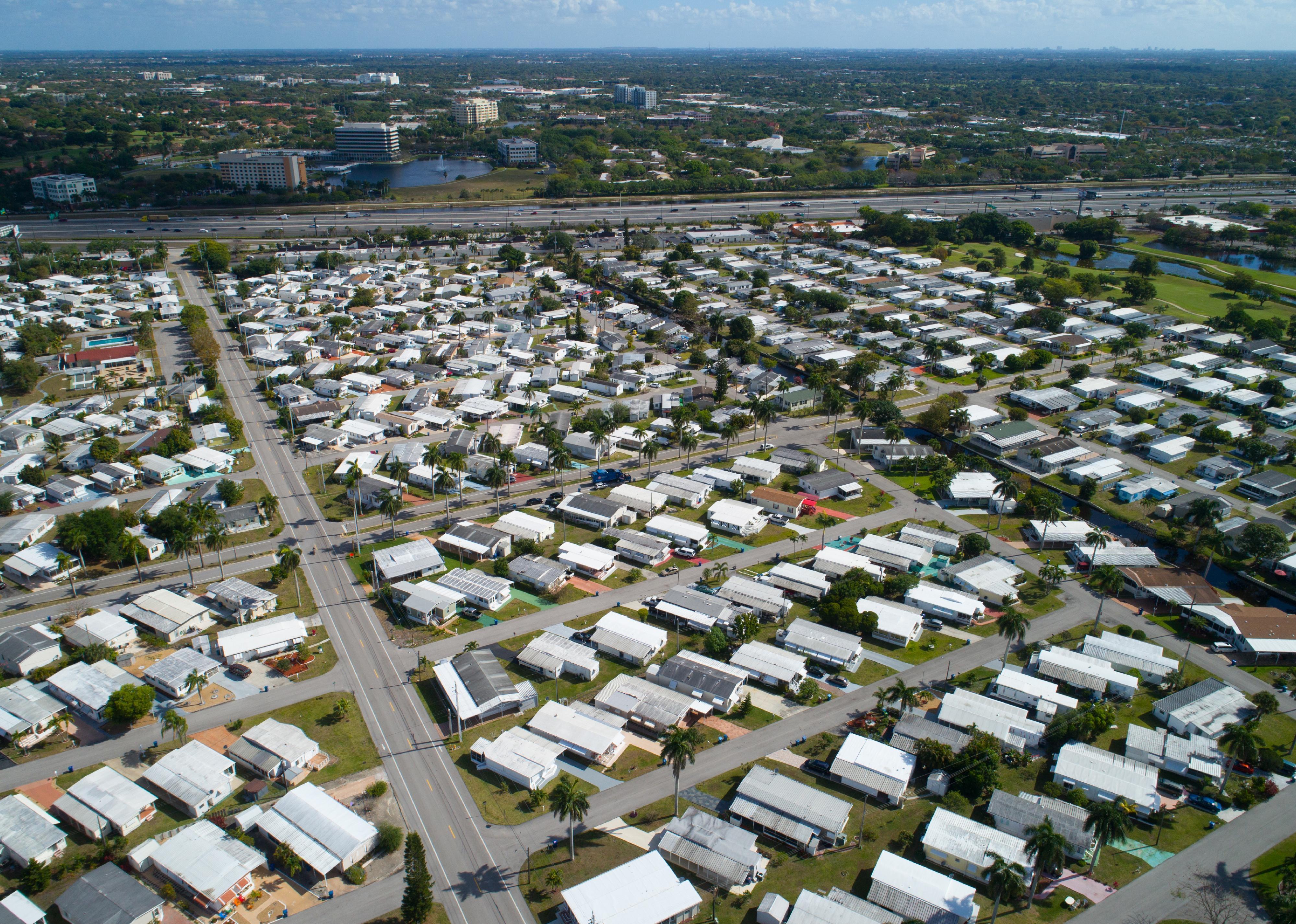
Felix Mizioznikov // Shutterstock
#3. Florida
– Children ages 0 to 17 in poverty: 774,679 (18.4% of this age range in state)
– Children ages 0 to 4 in poverty: 212,346 (19.8% of this age range in state)
– Children ages 5 to 17 in poverty: 545,090 (17.5% of this age range in state)
– Median household income: $63,054
– County with the most children in poverty: Miami-Dade County (95,520 children, 18.1% of children in this county)
America’s Children’s Campaign is a nonprofit organization that aims to create systemic change for Florida’s children and families. One of the contributing factors to child poverty, per the organization, is the juvenile justice system, which can severely hinder the development of those who are incarcerated—particularly people of color. The organization advocates for the increased use of civil citations rather than arrests in the case of nonviolent crimes so people can rehabilitate and pursue an education.

Ruben A Martinez // Shutterstock
#2. California
– Children ages 0 to 17 in poverty: 1.36 million (15.8% of this age range in state)
– Children ages 0 to 4 in poverty: 339,169 (15.8% of this age range in state)
– Children ages 5 to 17 in poverty: 993,484 (15.4% of this age range in state)
– Median household income: $84,831
– County with the most children in poverty: Los Angeles County (374,321 children, 18.4% of children in this county)
In 2013, the Public Policy Institute of California and the Stanford Center on Poverty and Inequality created the California Poverty Measure to go beyond the official poverty index and consider measures of social welfare, such as cost of living and access to food and education, in addition to income inequality. The PPIC credits California’s steadily decreasing childhood poverty rate to social welfare programs like earned income tax credits and the food assistance program CalFresh.

f11photo // Shutterstock
#1. Texas
– Children ages 0 to 17 in poverty: 1.44 million (19.5% of this age range in state)
– Children ages 0 to 4 in poverty: 393,888 (21.2% of this age range in state)
– Children ages 5 to 17 in poverty: 1,023,611 (18.6% of this age range in state)
– Median household income: $66,959
– County with the most children in poverty: Harris County (282,319 children, 23.0% of children in this county)
The number of Latino children living 200% or more below the poverty line in Texas is utterly astounding, at 2 million. Despite a low unemployment rate, the minimum wage ($7.25 per hour) presents challenges to financial stability, considering about 1 in 4 jobs in the state are considered low-wage.
Data reporting by Emilia Ruzicka. Story editing by Brian Budzynski. Copy editing by Paris Close. Photo selection by Abigail Renaud.

